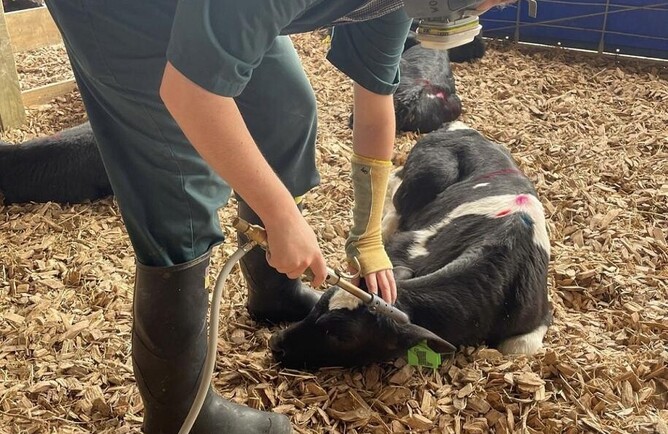Vet tech Olivia discusses her favourite time of year: disbudding.
Believe it or not, it's that time of year again - the calves have arrived and it's time to disbud.
This is my favourite time of year, as it's always great catching up on how calving has been going and checking out the future of the herd.
A few points to remember prior to disbudding:
Your calves must be between the ages of 2-6 weeks. As the calves get older, their buds are bigger and harder to remove and, if left too long, they may require dehorning instead;
Calves must be off milk for at least 3 hours prior to disbudding. This gives the milk in their stomach time to digest and therefore reduces the risk of aspiration pneumonia from any milk that might come back up when they lie down;
If calves are outside, they may need to be brought into a clean and dry area;
Remove any fresh straw as this is a huge fire hazard to both your calves and us.
The disbudding process
Our teams of techs and vets will firstly sedate your calves. Once asleep, we will create a nerve block with a local anaesthetic to prevent the calves from feeling the procedure.
We will then remove and cauterise the buds, check the site for any bleeding and then apply an antibiotic spray to reduce the risk of infection.
We also have the option of using Metacam and/or TriSolfen at disbudding to provide pain relief for recovery.
Disbudding aftercare
Following disbudding, aftercare is extremely important. This is where the responsibility shifts to you.
Calves should ideally be checked every 20 minutes for an hour following disbudding. Most calves will be up on their feet within an hour, however this is variable between animals. We would expect all animals to be up within 3 hours.
Once all of the calves are up and looking bright and alert, they can be fed.
During the recovery period, it is important to encourage the calves to sit in an upright position rather than lying on their side. This reduces the risk of bloating and regurgitation and protects the airways.
If the calves are recumbent and in direct sunlight then they may need to be moved to a more sheltered area. This is especially important during those hotter days as calves that have been sedated are unable to regulate their own body temperature.
The bud site also needs to be routinely checked during feeding for any signs of excessive bleeding or infection. If the site is actively bleeding after the VetSouth team has left, contact the clinic and we can arrange for someone to come out and re-cauterise the site.
Calves should be kept dry and indoors for at least 24 hours following disbudding to reduce the risk of infection.
Taking advantage of the sedation
Disbudding is also a great time to take advantage of the calves being sedated to complete other routine work much more efficiently than usual!
We offer ear notching and blood testing at disbudding time and can send any samples off to be tested for DNA, BVD and the A2 gene.
We’re also happy to castrate, vaccinate, remove any extra teats and check navels for signs of infection.
If you are concerned about any of your calves following disbudding please do not hesitate to seek advice from your KeyVet.

